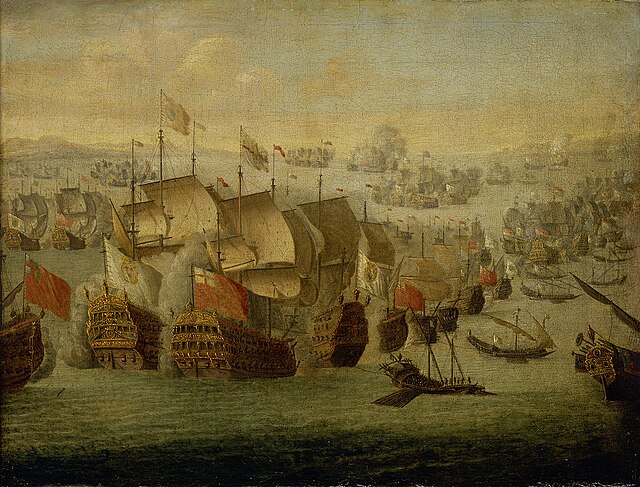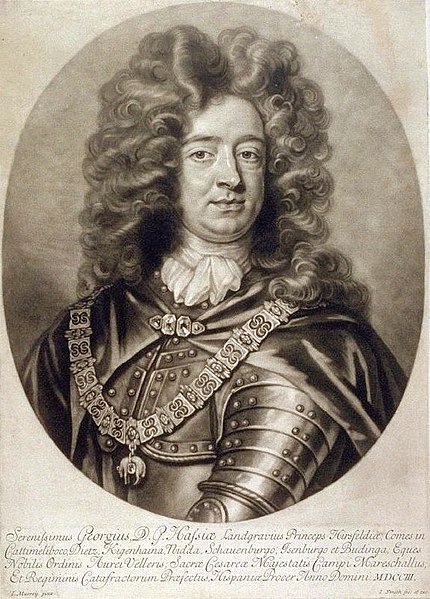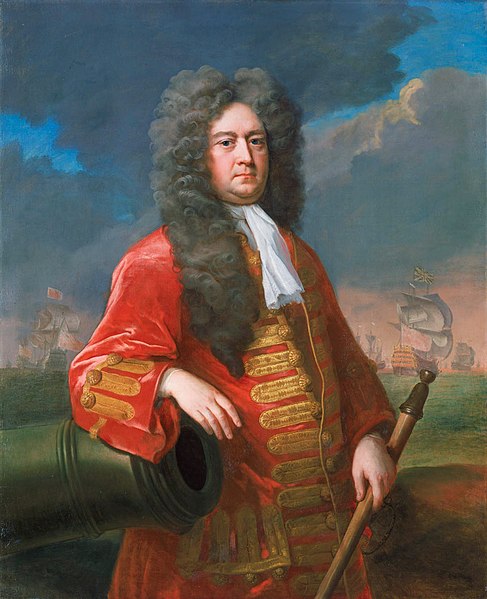The battle of Málaga, also known as the battle of Vélez-Málaga, was a major fleet action which took place during the War of the Spanish Succession between an Anglo-Dutch fleet and a French naval force on 24 August 1704. Both sides fought an intense engagement before the Anglo-Dutch fleet withdrew the next day. The French subsequently returned to Toulon, transforming the battle from a tactical stalemate into a strategic defeat, as they would not put out to sea again for the duration of the conflict. Occurring soon after the Anglo-Dutch capture of Gibraltar a few weeks prior, the battle served as one of the numerous engagements which took place for control over the settlement during the war.
A painting of the battle by Isaac Sailmaker
A sketch of the Anglo-Dutch capture of Gibraltar made on 1 August 1704
An illustration of HMS Prince George at the battle by Charles Dixon
The capture of Gibraltar by Anglo-Dutch forces of the Grand Alliance occurred between 1 and 4 August 1704 during the War of the Spanish Succession. Since the beginning of the war the Alliance had been looking for a harbour in the Iberian Peninsula to control the Strait of Gibraltar and facilitate naval operations against the French fleet in the western Mediterranean Sea. An attempt to seize Cádiz had ended in failure in September 1702, but following the Alliance fleet's successful raid in Vigo Bay in October that year, the combined fleets of the 'Maritime Powers', the Netherlands and England, had emerged as the dominant naval force in the region. This strength helped persuade King Peter II of Portugal to sever his alliance with France and Bourbon-controlled Spain, and ally himself with the Grand Alliance in 1703 as the Alliance fleets could campaign in the Mediterranean using access to the port of Lisbon and conduct operations in support of the Austrian Habsburg candidate to the Spanish throne, the Archduke Charles, known to his supporters as Charles III of Spain.

Sketch of Gibraltar by an officer of Admiral Rooke's fleet on 1 August 1704
Prince George of Hesse-Darmstadt (1670–1705). Prince George was the Imperial representative in the Iberian Peninsula and the nominal commander of the Anglo-Dutch forces.
Admiral George Rooke (1650–1709) by Michael Dahl
Statue of Sir George Rooke, erected in Gibraltar in 2004 to celebrate 300 years of British rule






